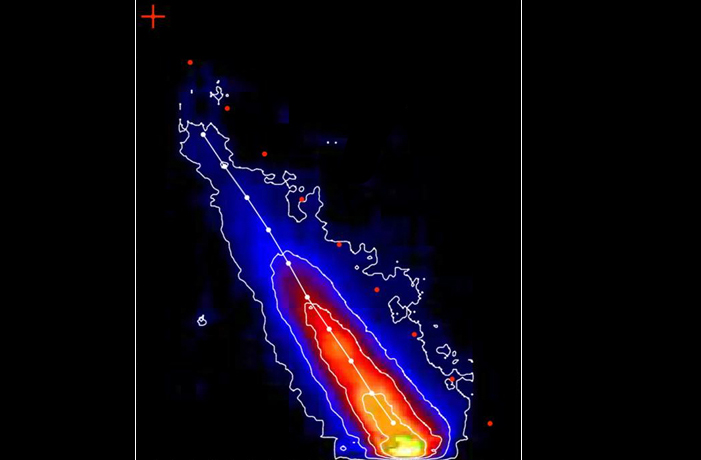.

FINAL MOMENTS Comet ISON’s tail of dust (colored) separated from its nucleus (red cross, upper left) about 40 minutes before the comet’s flyby of the sun. The red dots trace the comet’s trajectory as it crossed roughly 200,000 kilometers in about 100 minutes.
.
Comet ISON was dead at least eight hours before its closest approach with the sun last fall, astronomers report July 4 in Astronomy & Astrophysics. The data, from the SOHO spacecraft, reveal the doomed comet’s final moments during its first and only visit from the farthest reaches of the solar system.
Until now, astronomers weren’t sure exactly when or how the comet met its end (SN Online: 12/3/13). Because ISON was so close to the sun, most telescopes couldn’t see it. SOHO, a solar telescope, was one of few instruments capable of watching the comet during its final plunge.
Werner Curdt of the Max Planck Institute for Solar System Research in Göttingen, Germany, and colleagues obtained ultraviolet spectra that show the remains of the comet nucleus dragging a tail of dust. When the comet reached the sun, the tail had separated from the nucleus, suggesting that ISON was already an ex-comet. The nucleus broke apart hours earlier, the scientists conclude, based on when the last puffs of dust launched off its surface. The tail seen by SOHO and in previous images was probably a remnant of fatal fracturing caused by the sun’s intense heat, the team says.
Quelle: ScienceNews
4870 Views
